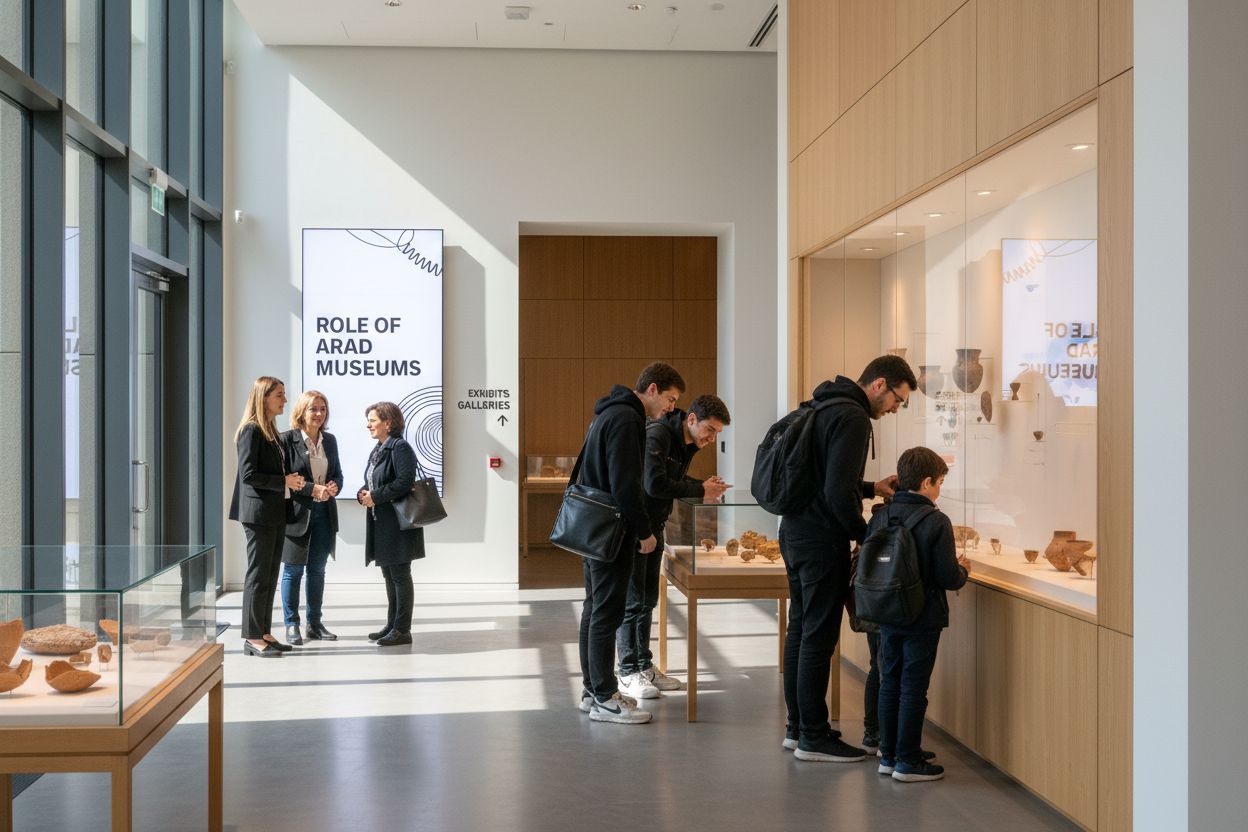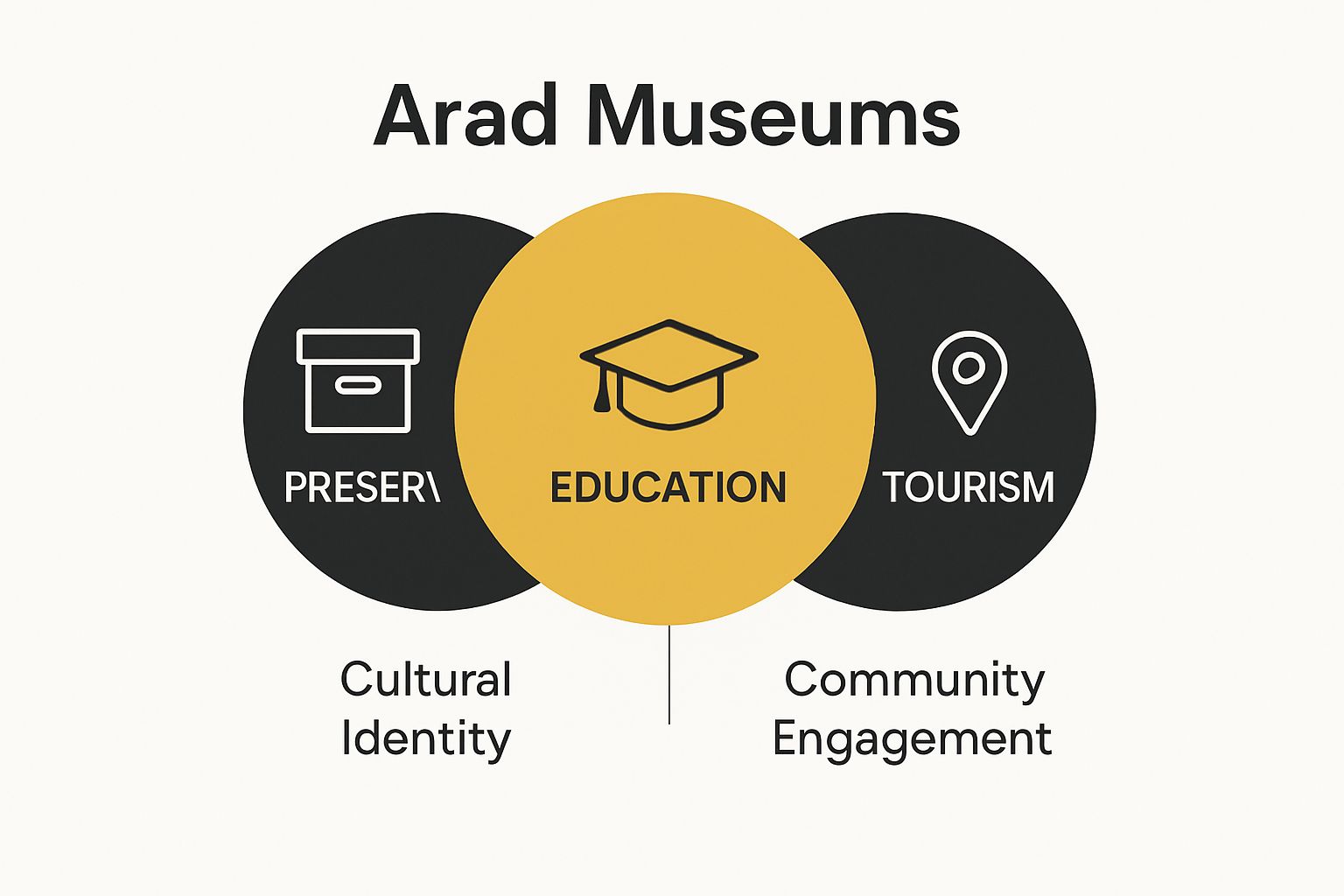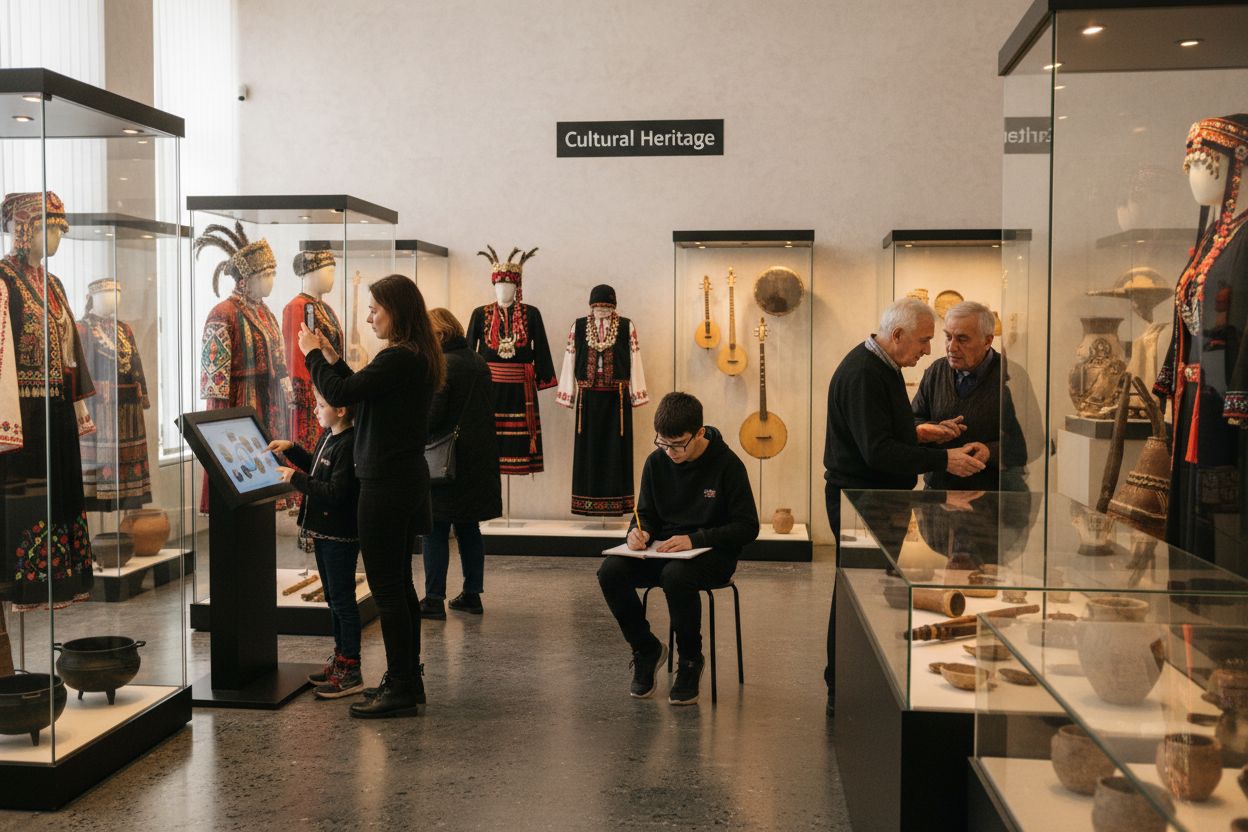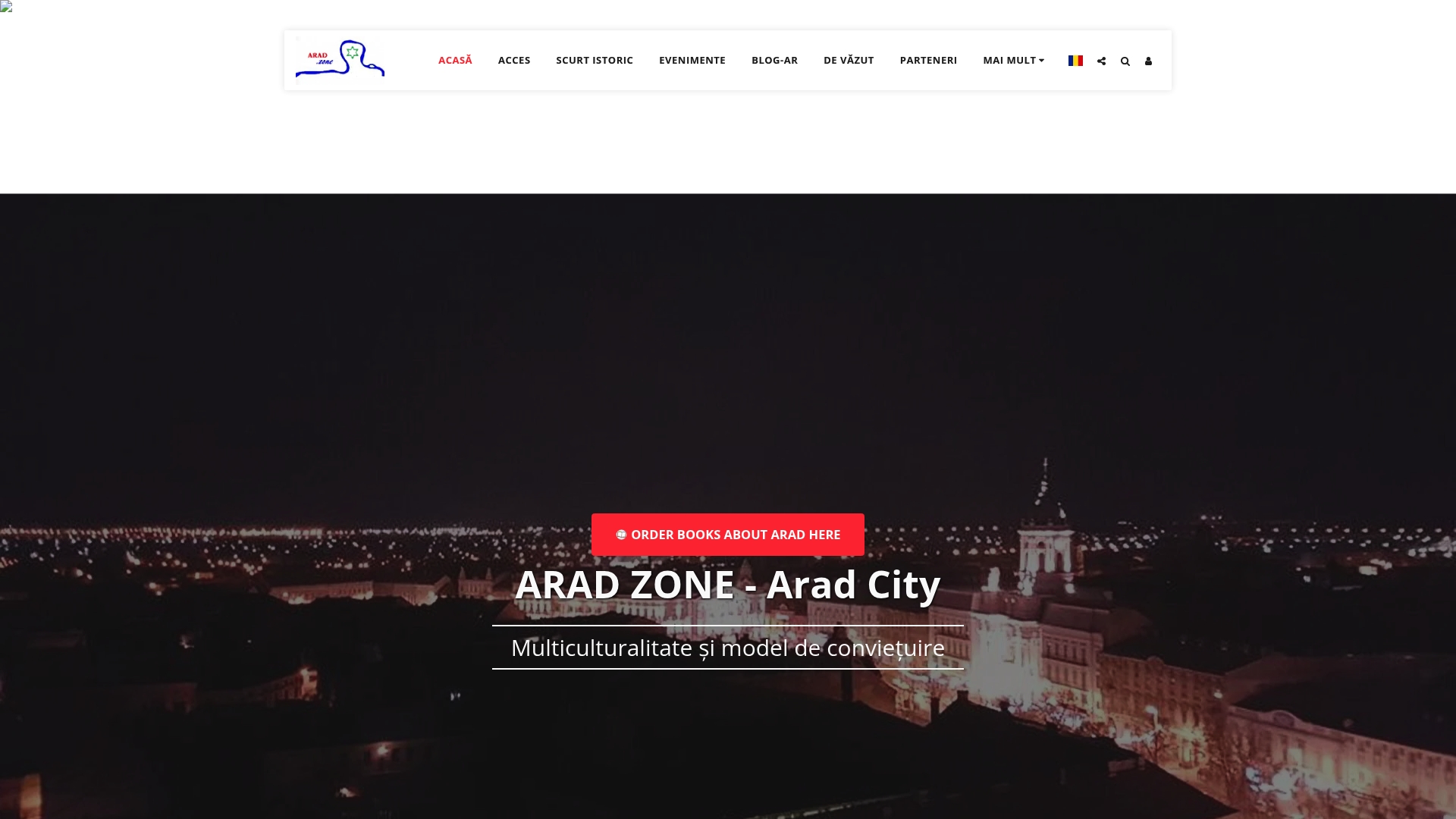Understanding the Role of Arad Museums in Culture
- Arad Zone
- 5 hours ago
- 8 min read

Arad museums do more than line their shelves with ancient artifacts. They help preserve a multicultural story and act as living classrooms for everyone who visits. Some Arad museum collections date all the way back to prehistoric times, holding items from Dacian, Roman, and medieval eras. Most people expect a quiet place with dusty objects, but these museums are reshaping education and tourism in Western Romania in ways visitors never see coming.
Table of Contents
Quick Summary
Takeaway | Explanation |
Arad museums preserve diverse cultural heritage | They document and showcase artifacts from various ethnic groups in the region. |
Museums serve as educational hubs | They host programs, workshops, and exhibits to inform visitors about local history. |
Cultural tourism drives economic benefits | Museums attract tourists, boosting local businesses and creating jobs. |
Technological innovation enhances engagement | Digital tools and virtual experiences expand museum accessibility for global audiences. |
Community involvement shapes museum relevance | Collaboration with local communities fosters inclusivity and cultural exchange. |
What are Arad Museums and Their Functions?
Arad museums represent critical cultural institutions that preserve, showcase, and interpret the rich historical and artistic heritage of the Arad region. These museums serve as educational and research centers dedicated to documenting the multicultural narrative of Western Romania. The Arad Museum Complex encompasses multiple specialized institutions that collectively tell the story of local development, artistic achievements, and societal transformations.
Preservation of Regional Heritage
Museums in Arad play a fundamental role in collecting, conserving, and displaying artifacts that represent the region’s diverse cultural landscape. They meticulously document historical periods, archaeological findings, artistic movements, and community experiences. The museums collect items representing various ethnic groups that have historically inhabited the area, including Romanian, Hungarian, German, Serbian, and Jewish populations.
Key aspects of heritage preservation include:
Documenting archaeological discoveries
Maintaining historical documents and manuscripts
Protecting and restoring artistic artifacts
Creating comprehensive archival records
Research and Educational Functions
Beyond preservation, Arad museums serve critical research and educational purposes. Scholars, historians, and researchers utilize museum collections to study regional developments, social dynamics, and cultural interactions. These institutions host academic conferences, publish scholarly works, and provide research facilities for professionals and students interested in understanding the region’s complex history.
The museums also function as important educational spaces for students and visitors. Through carefully curated exhibitions, interactive displays, and educational programs, they help visitors understand the historical context and cultural significance of the artifacts on display.
These museums are not merely storage spaces for historical objects but dynamic institutions that actively engage with contemporary society, bridging past experiences with present understanding and future perspectives.
The following table organizes the core functions of Arad museums and how they support both cultural preservation and educational development.
Function | Description |
Preservation of Regional Heritage | Collecting, conserving, and displaying artifacts from various historical periods and ethnic groups. |
Research | Providing resources and facilities for scholars to study the region’s historical and cultural evolution. |
Educational Engagement | Hosting exhibitions, workshops, and guided tours designed for diverse audiences and age groups. |
Community Involvement | Collaborating with local communities to foster inclusivity and represent a wide range of perspectives. |
Promotion of Cultural Identity | Presenting balanced narratives and celebrating the area’s multicultural history. |
Why Arad Museums Matter for Culture and Education
Arad museums represent more than historical repositories. They are dynamic cultural platforms that play a critical role in preserving knowledge, promoting understanding, and fostering cultural identity.

According to research on museum educational impact, these institutions serve as powerful educational environments that transcend traditional learning boundaries.
Cultural Identity and Social Memory
Museums in Arad serve as critical guardians of collective memory, documenting the complex multicultural heritage of the region. By presenting narratives of different ethnic groups who have historically coexisted in the area, these institutions help communities understand their shared history and individual contributions. Preserving cultural memory becomes a mechanism for promoting mutual respect and understanding among diverse populations.
Key aspects of cultural preservation include:
Representing multiple ethnic perspectives
Documenting historical interactions
Presenting balanced historical narratives
Celebrating cultural diversity
Educational Impact and Knowledge Transmission
Beyond archival functions, Arad museums function as vibrant educational spaces that engage audiences of all ages. They transform historical artifacts and cultural objects into powerful learning tools, creating immersive experiences that connect visitors with regional history. Explore our comprehensive guide on Arad cultural workflows to understand how these institutions facilitate knowledge transmission.
These museums offer unique learning opportunities through:
Interactive exhibition design
Educational workshops
Guided tours for students
Multimedia presentation techniques
By making complex historical information accessible and engaging, Arad museums bridge academic research with public understanding, ensuring that cultural knowledge remains dynamic and relevant to contemporary audiences.
How Arad Museums Contribute to Local Tourism
Arad museums are pivotal engines of cultural tourism, attracting visitors from diverse backgrounds and transforming the region into a compelling destination for cultural exploration. Research on sustainable tourism development highlights how museums serve as critical attractions that stimulate economic activity and promote regional heritage.
Economic Impact and Visitor Engagement
Museums in Arad generate significant economic benefits by drawing tourists who contribute to local hospitality, transportation, and retail sectors. Visitors typically engage with multiple tourism services during their museum experiences, creating a multiplier effect for the local economy. Cultural tourism becomes a strategic mechanism for economic revitalization, particularly in regions seeking to diversify their economic opportunities.
Key economic contributions include:
Generating direct tourist spending
Creating employment opportunities
Supporting local hospitality businesses
Attracting international cultural travelers
Cultural Attraction and Regional Branding
These museums function as powerful storytelling platforms that showcase Arad’s unique multicultural identity. By presenting compelling narratives about regional history, artistic achievements, and cultural interactions, they transform the destination into an attractive cultural destination. Check out our curated list of must-visit art galleries to understand the depth of cultural experiences available.
Museums contribute to regional branding through:
Highlighting distinctive local characteristics
Creating memorable visitor experiences
Developing cultural tourism routes
Promoting regional authenticity
By positioning Arad as a sophisticated cultural destination, museums play a crucial role in attracting quality tourism that values deep, meaningful travel experiences beyond traditional sightseeing.
Key Collections and Exhibits that Define Arad Museums
Arad museums house extraordinary collections that narrate the complex historical and cultural evolution of the region. According to the Arad Museum Complex documentation, these institutions preserve remarkable artifacts spanning archaeological, ethnographic, and artistic domains that provide profound insights into local heritage.
Archaeological and Historical Exhibits
The archaeological collections represent a critical window into the region’s ancient past, featuring artifacts from prehistoric, Roman, and medieval periods. Remarkable collections showcase the multicultural interactions that have shaped Arad’s identity, including ceramic artifacts, metalwork, and archaeological remnants that illustrate human settlements and cultural exchanges.
Significant archaeological exhibit highlights include:
Dacian and Roman period artifacts
Medieval settlement remnants
Ancient tool and weapon collections
Prehistoric ceramic discoveries
Ethnographic and Cultural Heritage Displays
Ethnographic collections provide a vivid representation of the region’s diverse cultural traditions. These exhibits document the daily life, customs, and artistic expressions of various ethnic communities that have coexisted in Arad. Explore our comprehensive guide to cultural treasures to understand the depth of these remarkable collections.
Key ethnographic exhibit features include:
Traditional folk costumes
Handcrafted household items
Religious and ceremonial artifacts
Musical instruments representing different cultural groups
These meticulously curated collections transform Arad museums from mere repositories into dynamic storytelling platforms that illuminate the region’s rich, interconnected cultural tapestry.
This table compares two major types of core exhibits found in Arad museums, highlighting each collection’s distinct focus and representative artifacts.
Exhibit Type | Main Focus | Example Artifacts / Features |
Archaeological/Historical | Ancient periods (prehistoric, Dacian, Roman, medieval) | Ceramic discoveries, ancient tools, weapons, settlement remnants |
Ethnographic/Cultural | Everyday life and customs of ethnic groups | Folk costumes, household items, religious artifacts, musical instruments |

The Future of Arad Museums in a Changing World
Arad museums are poised to transform their role in preserving and presenting cultural heritage through strategic technological and community-centered innovations. Research on museum digitalization indicates significant shifts in how cultural institutions engage with audiences and maintain relevance in an increasingly digital landscape.
Digital Transformation and Technological Integration
Technological adaptation represents a critical strategy for Arad museums to expand their reach and educational impact. By integrating multimedia experiences, virtual tours, and interactive digital platforms, these institutions are breaking traditional boundaries of museum engagement. Advanced technologies enable museums to create immersive experiences that connect global audiences with local cultural narratives.
Key digital transformation strategies include:
Developing comprehensive virtual exhibition platforms
Creating interactive digital archives
Implementing augmented reality experiences
Designing online educational programs
Community Engagement and Collaborative Approaches
Future museum strategies emphasize deeper community involvement and collaborative knowledge creation. Museums are transitioning from passive display spaces to active community centers that facilitate dialogue, learning, and cultural exchange. Explore our guide to Arad’s cultural treasures to understand the evolving role of these institutions.
Emergent community engagement models feature:
Participatory exhibition design
Collaborative research initiatives
Community storytelling programs
Inclusive cultural representation projects
By embracing technological innovation and community-centered approaches, Arad museums are positioning themselves as dynamic, responsive cultural institutions that bridge historical understanding with contemporary social dynamics.
Discover the True Heart of Arad’s Culture with Us
Are you inspired by the rich multicultural history and educational value that Arad museums bring to light, but unsure where to begin your own journey of discovery? If you want to experience the real stories behind the artifacts and understand why these institutions matter for both culture and education, Arad.zone is the perfect place to start. Our platform is dedicated to revealing Arad as the cultural gateway of Romania, especially for those entering from Western Europe seeking meaningful and authentic experiences.

Do not miss your chance to uncover the hidden layers of Arad’s past and present. Visit Arad.zone now to dive deeper into exclusive blogs and handpicked resources that bring Arad’s museums and multicultural heritage to life. For a closer look at the treasures you read about, check our article on discovering cultural treasures in Arad’s museums. Unlock the stories and expert insights that make your exploration personal and unforgettable. Join our community today and become part of Arad’s living legacy.
Frequently Asked Questions
What functions do Arad museums serve in preserving cultural heritage?
Arad museums preserve cultural heritage by collecting, conserving, and displaying artifacts that represent the region’s diverse history. They document archaeological discoveries, maintain historical documents, and protect artistic artifacts. To learn more, visit a local museum’s exhibitions to see these efforts firsthand.
How do Arad museums contribute to educational experiences?
Arad museums provide educational experiences through curated exhibitions, interactive displays, and workshops for visitors. They engage audiences of all ages by transforming historical artifacts into learning opportunities. Attend an educational workshop or guided tour to experience this firsthand.
In what ways do Arad museums support local tourism?
Arad museums support local tourism by attracting visitors who contribute economically to the region through spending on hospitality and services. They promote the cultural identity of the area, making it a compelling destination for cultural exploration. Consider visiting multiple museums in one trip to fully experience what they offer.
How are Arad museums adapting to digital transformation?
Arad museums are adapting to digital transformation by integrating multimedia experiences, virtual tours, and interactive online platforms. These technologies enhance visitor engagement and broaden their reach. Check their websites for upcoming virtual experiences you can join from home.
Why is community engagement important for Arad museums?
Community engagement is crucial for Arad museums as it allows for collaborative knowledge sharing and representation of local narratives. This involvement transforms museums into active community centers that foster dialogue and cultural exchange. Participate in community programs or events offered by the museums to contribute to this engagement.
Recommended




Comments